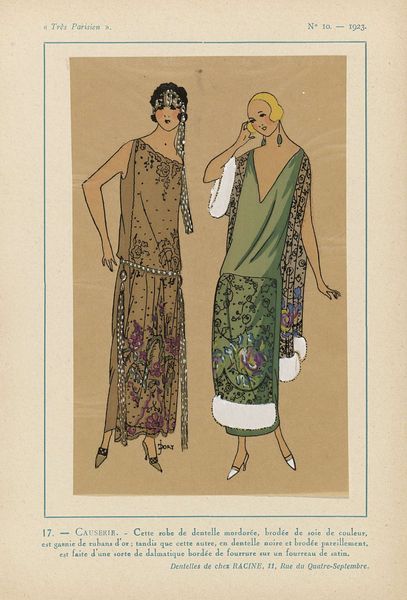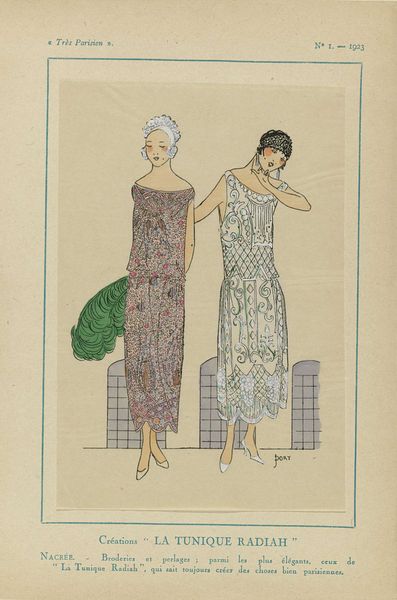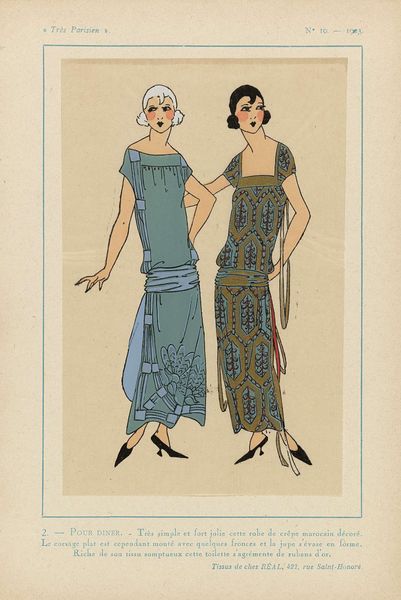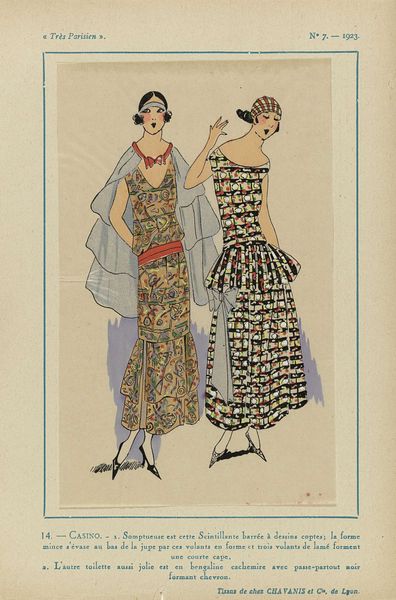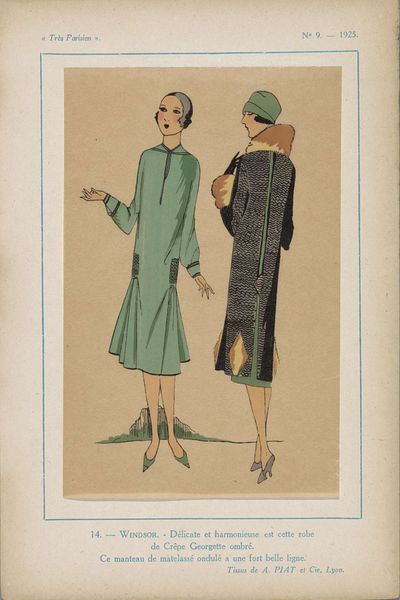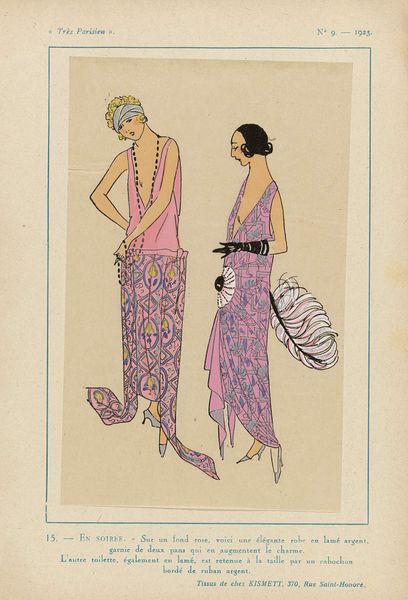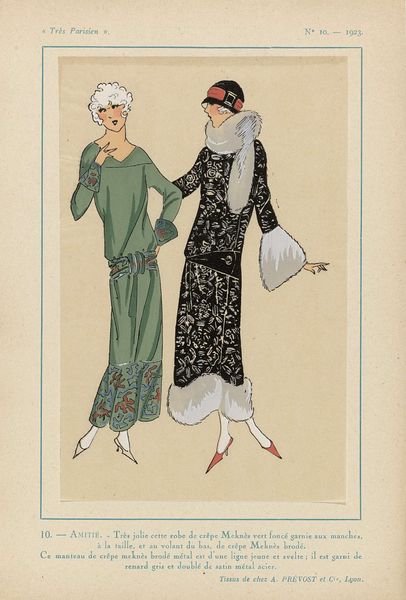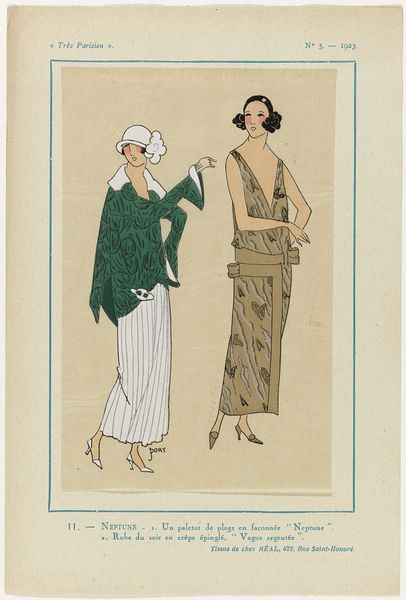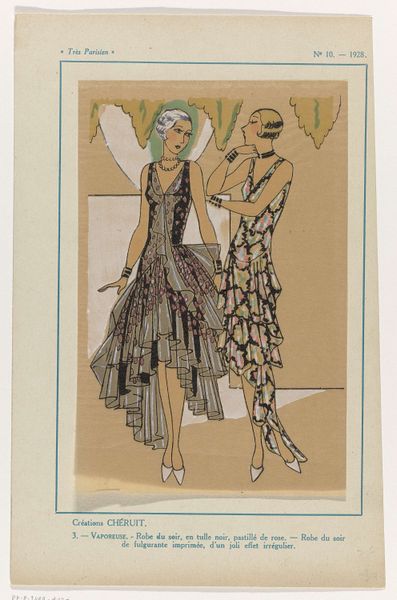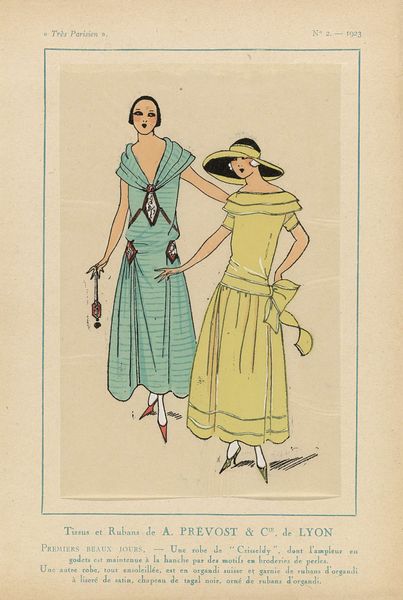
#
imaginative character sketch
#
blue ink drawing
#
pastel soft colours
#
traditional media
#
personal sketchbook
#
historical fashion
#
sketchbook drawing
#
character design for animation
#
watercolour illustration
#
storyboard and sketchbook work
#
dress
Dimensions: height 269 mm, width 180 mm
Copyright: Rijks Museum: Open Domain
Editor: Here we have “Très Parisien, 1923, No. 1: Creation ALICE BERNARD…", made in 1923. It seems to be a fashion illustration, primarily in greens and blues. It strikes me as very Art Deco, with those geometric patterns and streamlined silhouettes. What do you see in this piece beyond just a fashion plate? Curator: This image, though seemingly just a snapshot of 1920s fashion, reveals much about the shifting roles of women in society at that time. We see the 'garçonne' silhouette – rejecting traditional feminine forms. What do those shorter hemlines and looser fits represent to you? Editor: Freedom, I guess? A breaking away from older, more restrictive styles, literally and figuratively? Curator: Precisely! This aesthetic embodies the burgeoning independence and self-expression of women post-World War I. This print circulated widely, imagine the subtle rebellion it represented in homes and public spaces. It was an accessible form of activism, declaring a shift in identity through style. What do you make of the reference to 'Emerald' in the inscription? Editor: Maybe Emerald was the designer’s way of subtly pushing for change by choosing a bold colour and using a striking title for the piece? Curator: Exactly, using "emerald," suggests more than just a colour choice, perhaps aligning with emerging concepts around gender and visual messaging. Fashion was then, as it still can be, a powerful statement of intent, and resistance. Editor: I never considered fashion illustration as a form of social commentary. It's fascinating to view this piece through that lens. Curator: It's about excavating the layered meanings embedded within seemingly simple imagery, and thinking about its legacy today.
Comments
No comments
Be the first to comment and join the conversation on the ultimate creative platform.
